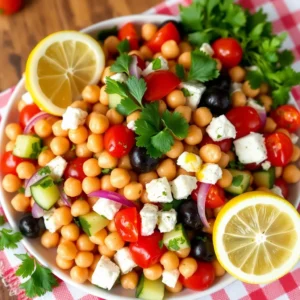Has this ever happened to you? It’s Friday night, and you’re craving that perfect pizza – you know, the one with the chewy, flavorful crust that makes your taste buds dance. You check your delivery options, but nothing compares to those artisanal pizzas from that fancy place across town. Well, what if I told you that you could create that experience right in your own kitchen?
Hey there, Alexandre here! Today, I’m sharing my absolute favorite sourdough pizza dough recipe that will revolutionize your homemade pizza game. Trust me, once you try this, you’ll never look at store-bought pizza the same way again.
As a busy parent who still wants to put something special on the table, I’ve perfected this recipe to be both impressive and doable. Even on those chaotic weeknights when the kids have soccer practice and you’ve got emails piling up, this sourdough pizza dough can be your secret weapon for a dinner that feels like a treat, not a chore.
Why You’ll Love This Sourdough Pizza Dough
Let’s face it – we’ve all had those homemade pizzas that turn out… well, less than Instagram-worthy. The crust is either too tough, too soggy, or just plain boring. But sourdough pizza dough changes everything.
First off, that tangy, complex flavor? It’s the real deal. While regular pizza dough can taste pretty one-dimensional, sourdough brings depth and character to every bite. It’s like comparing a beautiful symphony to someone banging on a single piano key.
Then there’s the texture. Oh, the texture! Crispy edges that crackle when you bite into them, yet tender and airy on the inside. It’s that perfect balance that makes you close your eyes and sigh with happiness after each bite.
But my favorite part? This dough is actually more forgiving than traditional pizza dough. The natural fermentation process creates a more flexible dough that’s easier to work with. No more throwing dough at the ceiling and hoping it sticks (although that’s still fun to try with the kids!).
Plus, for all my health-conscious friends out there, sourdough fermentation makes the dough easier to digest and may even help your body absorb more nutrients. It’s a win-win!
What You’ll Need for Your Sourdough Pizza Adventure
Before we dive into the making of this magical dough, let’s gather our ingredients. The beauty of sourdough pizza dough is that it requires just a few simple ingredients, but the fermentation process transforms them into something extraordinary.
Ingredients (Makes 2 Pizza Crusts)
- 1 cup active sourdough starter (the star of our show!)
- 3/4 cup warm water (about 90°F/32°C – think pleasant bath water)
- 2 tablespoons olive oil (the good stuff, if you have it)
- 1 teaspoon salt (kosher or sea salt works beautifully)
- 2 1/2 cups all-purpose flour (plus a bit extra for dusting)
- 1 teaspoon sugar (optional, but helps with browning)
Don’t have a sourdough starter yet? No worries! You can either make your own (I’ve got a guide for that too!) or ask around – sourdough bakers are usually happy to share some of their starter. We’re a friendly bunch who love converting others to the sourdough lifestyle!
Kitchen Tools
Nothing fancy required here:
- Large mixing bowl
- Measuring cups and spoons
- Clean kitchen towel or plastic wrap
- Pizza stone or baking sheet
- Parchment paper (your best friend for mess-free pizza making)
- Optional but helpful: bench scraper, pizza peel
Now, don’t stress if you don’t have a pizza stone. While it does help create that ideal crispy crust, a regular baking sheet turned upside down works surprisingly well too!
Let’s Make Some Sourdough Pizza Dough Magic
Alright, let’s roll up our sleeves and get those hands a little floury. Don’t worry – I’ll guide you through each step of creating this amazing pizza crust.
Step 1: Mix Your Dough Base
In your large mixing bowl, combine 1 cup of active sourdough starter, 3/4 cup warm water, and 2 tablespoons olive oil. Give it a gentle stir until everything is well combined.
Your starter should be bubbly and active – ideally fed about 4-8 hours before using. If you pull it straight from the fridge, give it a feeding and let it come to room temperature first. A happy starter means a happy pizza dough!
Step 2: Add the Dry Ingredients
Now, add 1 teaspoon salt and 2 1/2 cups all-purpose flour to your bowl, along with the teaspoon of sugar if you’re using it. Mix everything together until a shaggy dough forms.
Don’t panic if it looks a bit messy at first – that’s completely normal! Sourdough pizza dough starts out looking like a shaggy disaster but transforms beautifully with a little patience.
Step 3: Knead That Dough
Turn your dough out onto a lightly floured surface and knead it for about 8-10 minutes. This is where the magic happens – the dough will gradually transform from sticky and rough to smooth and elastic.
I like to think of kneading as dough therapy – push with the heel of your hand, fold, rotate, and repeat. It’s remarkably satisfying after a long day, and a great way to work out any frustrations! Plus, your arms get a mini workout.
If you prefer, you can use a stand mixer with a dough hook attachment. But honestly, there’s something therapeutic about hand-kneading that connects you to generations of pizza makers before you.
Step 4: First Rise – Patience Pays Off
Place your kneaded dough back in the bowl and cover it with a damp kitchen towel or plastic wrap. Now comes the waiting game – let it rise at room temperature for about 4-6 hours, or until it roughly doubles in size.
The timing here is flexible. If your kitchen is warm, it might rise faster. Cooler room? It’ll take a bit longer. This is where sourdough is so accommodating to busy schedules – it works on its own timeline while you go about your day.
For an even deeper flavor (which I highly recommend), you can refrigerate the dough after it’s risen for about an hour. Pop it in the fridge for anywhere from 12-24 hours. This slow, cold fermentation develops those complex sourdough flavors that make your pizza truly special.
Step 5: Shape Your Pizza Crusts
Once your dough has risen, gently punch it down to release any air bubbles. Then, divide it into two equal portions using a knife or bench scraper.
Now for the fun part – shaping! On a lightly floured surface, roll or stretch each portion into your desired pizza shape. Aim for about 1/4 inch thickness for that perfect balance of crispy and chewy.
If the dough keeps springing back while you’re shaping it (sourdough can be stubborn sometimes!), just let it rest for 5-10 minutes and try again. The gluten needs to relax, just like we all do sometimes!
Step 6: Preheat for Pizza Perfection
This step is crucial – preheat your oven to 475°F (245°C) with your pizza stone or baking sheet inside. A screaming hot oven is the secret to that perfect crispy-bottom crust that we all dream about.
If you don’t have a pizza stone, don’t worry. An upside-down baking sheet works well too – the key is getting it nice and hot before your pizza goes in.
Step 7: Top and Bake Your Masterpiece
Transfer your shaped dough to a piece of parchment paper or a lightly floured pizza peel. Now for the creative part – top your pizza with whatever makes your heart sing!
Classic tomato sauce and mozzarella never disappoints, but sourdough pizza crust pairs beautifully with more adventurous toppings too. Try a white pizza with ricotta, garlic, and spinach, or go bold with BBQ chicken and red onions.
Carefully slide your pizza (parchment paper and all) onto the preheated stone or baking sheet. Bake for 12-15 minutes, or until the crust is golden brown and the cheese is bubbly and slightly browned.
For even browning, rotate your pizza halfway through baking. This simple step ensures that every slice is equally perfect.
Step 8: The Hardest Part – Waiting
Remove your pizza from the oven and let it cool for just 2-3 minutes before slicing. I know it’s tempting to dive right in, but this brief cooling period allows the cheese to set and prevents that sad moment when all your toppings slide off on the first bite.
Use this time to sprinkle on any finishing touches – fresh basil, a drizzle of good olive oil, or a dusting of Parmesan adds that restaurant-quality flourish.
Now, slice and serve your homemade sourdough pizza with pride. Take a moment to appreciate what you’ve created – a pizza with character, flavor, and a crust that puts delivery to shame!
Pro Tips for Sourdough Pizza Success
Now that you’ve mastered the basics, let me share some tips that will take your sourdough pizza dough from great to absolutely magnificent!
Starter Health is Everything
Your sourdough starter is like a pet – it needs regular feeding and care. For the best pizza dough, use your starter when it’s at peak activity – usually 4-8 hours after feeding, when it’s doubled in size and full of bubbles. A sluggish starter will give you a dense crust, and nobody wants that!
Don’t have a starter yet? I’ve got good news – making one is easier than you think. All you need is flour, water, and about 7-10 days of patience. Or do what I did when I first started – ask a friend with a sourdough obsession for some of theirs. Sourdough people LOVE sharing their starters – it’s like giving away a piece of our bread-making legacy!
The Hydration Game
If your dough feels too sticky to work with, don’t panic and dump in cups of flour! Add just a tablespoon at a time until it reaches a manageable consistency. Too much flour will make your crust tough.
On the flip side, if your dough feels too dry and isn’t coming together, add water by the teaspoon. Remember, different flours absorb water differently, so you might need to adjust based on your specific flour.
And here’s a little secret – slightly wetting your hands makes handling sticky dough much easier. It’s like having non-stick fingers!
Temperature Matters
Your kitchen temperature affects fermentation time dramatically. In summer, your dough might double in just 3-4 hours. In winter, it could take 6-8 hours or more.
Use this to your advantage! If you’re in a hurry, place your covered dough in a warm spot (near a sunny window or on top of your refrigerator). Need to slow things down? Pop it in the fridge – cold fermentation not only buys you time but also develops more complex flavors.
The Cold Fermentation Magic
Speaking of cold fermentation – if you can plan ahead, this is where sourdough pizza dough really shines. After the initial hour of room temperature fermentation, put your dough in the refrigerator for anywhere from 24-72 hours.
Yes, you read that right – up to THREE DAYS in the fridge! The cold slows down fermentation but doesn’t stop it, allowing those complex flavors to develop while the dough becomes more elastic and easier to shape. It’s like aging a fine wine, but much faster and definitely more delicious with pepperoni on top.
Dealing with Dough Difficulties
Is your dough fighting back when you try to stretch it? Don’t wrestle with it – you’ll both end up frustrated! Instead, let it rest for 10-15 minutes. This relaxes the gluten and makes the dough much more cooperative.
Got lumps in your dough? No worries! Those little pockets of flour will work themselves out during the rising process. Consider them little flavor bombs in the making.
My Sourdough Pizza Journey
I still remember my first attempt at sourdough pizza. It was during those early pandemic days when everyone suddenly became bread bakers. My starter (affectionately named “Bubbles”) was thriving, and I was feeling ambitious.
The dough looked promising, but when I tried to transfer it to the hot pizza stone, disaster struck. The dough stretched, sagged, and folded onto itself in a sad, misshapen lump. My toppings slid off like passengers abandoning a sinking ship. My kids still refer to it as “The Blob Pizza Incident of 2020.”
But here’s the thing about cooking failures – they’re just learning opportunities with a side of humility. The next attempt was better, and the one after that was actually pretty good. Now, sourdough pizza night is a weekly tradition at our house. My teenagers even invite friends over for it, which as any parent of teens knows, is the ultimate culinary compliment.
What I love most about this recipe is how it fits into real life. The dough can hang out in the fridge while you deal with work deadlines or shuttle kids to activities. It doesn’t demand your immediate attention – it works on its own schedule and rewards your patience with incredible flavor.
Your Burning Sourdough Pizza Questions, Answered
Can I freeze sourdough pizza dough?
Absolutely! After the first rise, divide the dough, wrap each portion tightly in plastic wrap, and freeze for up to 3 months. When pizza night rolls around, just transfer the frozen dough to the refrigerator in the morning to thaw slowly. Let it come to room temperature for about 1-2 hours before shaping. The fermentation process is paused when frozen, preserving that perfect sourdough flavor until you’re ready to enjoy it.
How can I make my pizza crust extra crispy?
For that pizzeria-level crispiness, make sure your oven and pizza stone (or baking sheet) are screaming hot before your dough goes in. I’m talking at least 30 minutes of preheating. Also, try brushing the edges of your crust with a little olive oil before baking – this creates golden, crackly perfection. Finally, if your pizza looks done but the bottom isn’t as crisp as you’d like, you can carefully remove it from the parchment paper for the final few minutes of baking to allow the bottom to crisp up directly on the stone.
Can I use this sourdough pizza dough for other things?
Yes, and I highly encourage such delicious experimentation! This dough makes incredible focaccia – just press it into an oiled sheet pan, dimple the surface with your fingertips, drizzle with olive oil and sprinkle with flaky salt before baking. It also makes fantastic breadsticks: cut strips of dough, twist them, brush with olive oil, and sprinkle with garlic and herbs before baking until golden. You can even use it to make calzones – fill, fold, seal, and bake for portable pizza pockets that are perfect for lunch boxes or picnics!
Beyond Basic: Creative Ways to Use Your Sourdough Pizza Dough
Now that you’ve mastered the basics, let’s talk about some creative ways to use your sourdough pizza dough that go beyond the traditional pizza.
Sourdough Pizza Rolls
Roll out your dough into a rectangle, spread with sauce, cheese, and toppings, then roll it up like a cinnamon roll. Slice into 1-inch pieces, place in a greased baking dish, and bake until golden and bubbly. These are perfect for parties, game days, or whenever you want to shake up your pizza routine.
Stuffed Crust Magic
Who doesn’t love a stuffed crust? Roll your dough slightly larger than you need, place string cheese or cheese sticks around the perimeter, then fold the edge over to encase the cheese. Pinch to seal well, then top and bake as usual. The moment when you bite into that cheese-filled crust is pure joy!
Grilled Pizza Adventure
Take your pizza game outdoors! Preheat your grill to medium-high, oil the grates, and place your stretched dough directly on the grill. Cook for about 2 minutes until grill marks appear, then flip, quickly add toppings, and close the lid until the cheese melts. The smoky flavor adds a whole new dimension to your sourdough crust.
Making It Your Own: Flavor Variations
One of the beautiful things about sourdough pizza dough is how customizable it is. Here are some of my favorite variations:
Herb-Infused Crust
Add 1-2 tablespoons of dried herbs like oregano, basil, thyme, or an Italian blend directly to your dough during mixing. The herbs infuse the entire crust with flavor as it ferments.
Garlic Lover’s Delight
Mix 2-3 cloves of minced garlic into your dough, or for a more subtle approach, add 1 teaspoon of garlic powder. This pairs beautifully with white pizzas or anything with a lot of cheese.
Honey Wheat Variation
Replace 1 cup of all-purpose flour with whole wheat flour and add 1 tablespoon of honey instead of sugar. This creates a slightly sweeter, nuttier crust that works wonderfully with more robust toppings like BBQ chicken or caramelized onions.
Sourdough Pizza Dough: The Perfect Make-Ahead Meal Solution
In our busy lives, finding recipes that can be prepped ahead is like striking culinary gold. This sourdough pizza dough might just be the most flexible recipe in your repertoire.
Make it on a Sunday, keep it in the fridge, and you’ve got the foundation for multiple meals throughout the week. Monday might be classic Margherita pizza, Wednesday could be Mediterranean-inspired flatbread, and Friday could be cheesy calzones – all from the same batch of dough!
This make-ahead magic is especially helpful for those chaotic weeknights when you’re juggling work, kids’ homework, and various activities. Having pizza dough ready to go means dinner is just minutes away from the table.
Building Your Perfect Pizza
The beauty of homemade pizza is that every member of the family can customize their portion. Here’s how we do pizza night at my house:
- Prepare individual portions of dough (smaller for kids, larger for hungry teens)
- Set up a topping bar with options for everyone
- Let each person create their own pizza masterpiece
- Bake them one or two at a time, depending on your oven size
This approach turns dinner into an activity, gets everyone involved in the kitchen, and ensures that even the pickiest eaters find something to love. My youngest went through a phase where she would only eat “face pizzas” with olive eyes and pepper smiles – strange but still nutritious!
Sustainable Sourdough: Reducing Food Waste
One of the things I love most about sourdough baking is how it can help reduce food waste. Every time you feed your starter, you discard a portion – but that “discard” is perfectly good for making pizza dough!
Instead of throwing it away, collect your sourdough discard in a container in the refrigerator until you have enough to make pizza dough. You might need to add a bit more flour since discard isn’t as active as fed starter, but it works beautifully and gives you the satisfaction of creating something delicious from what would otherwise be waste.
The Community of Sourdough
There’s something special about sourdough baking that brings people together. Whether you’re sharing starter with a neighbor, swapping recipes with friends, or posting your creations on social media, sourdough creates connections.
Consider hosting a pizza party where everyone brings their favorite toppings, or package up “pizza kits” with balls of your sourdough dough, sauce, and cheese as gifts for friends going through busy times. Food is love, and sourdough pizza is a particularly delicious way to share that love with others.
Final Thoughts: Your Sourdough Pizza Journey
As you embark on your sourdough pizza dough adventure, remember that each batch will be a little different – and that’s part of the charm. Weather, flour variations, the mood of your starter – all these factors create subtle differences that make each pizza unique.
Embrace the process, enjoy the journey, and don’t stress about perfection. Even the “imperfect” pizzas will be delicious, and you’ll get better with each one you make. Soon, you’ll develop an intuitive feel for the dough – when it needs more time, when it’s ready to shape, when it’s perfectly fermented.
Your sourdough pizza dough might just become your signature dish – the one friends request when they visit, the one your family cheers for when they see it on the weekly menu. It’s more than just food; it’s a tradition in the making, a skill worth mastering, and a delicious way to bring joy to your table.
Happy pizza making, friends! I can’t wait to hear about your sourdough pizza adventures.
Helpful Resources for Your Sourdough Journey
If you’re looking to expand your sourdough repertoire beyond pizza, check out my sourdough bread basics guide for a comprehensive introduction to bread making.
For more pizza inspiration, my ultimate homemade pizza sauce recipe pairs perfectly with this sourdough crust.
And if you’re wondering what to do with leftover pizza dough (although there rarely is any!), take a look at these creative dough recipes.
For more information about the science behind sourdough fermentation, The Kitchn’s guide to sourdough offers fascinating insights.
If you’re curious about the health benefits of sourdough, Healthline’s article on sourdough bread provides research-backed information about why this ancient method of bread making might be better for your digestion.
Now go forth and create some sourdough pizza magic! Your taste buds – and anyone lucky enough to share your table – will thank you.



